U.S. Coast Guard Rescue Flotilla One at Normandy
A Historic Photo Gallery
During the spring of 1944, prior to the onset of Operation Overlord, President Franklin Roosevelt ordered the Coast Guard to provide search and rescue craft for the invasion. The Coast Guard had a fleet of 83-foot wooden-hulled patrol craft that were used for coastal patrols in U.S. waters and so the Commander in Chief of the U.S. Fleet, Admiral Ernest King, USN, ordered the Coast Guard to deploy 60 of these cutters to the United Kingdom for service during Operation Neptune/Overlord. Their hull numbers were removed and they were given new designations of 1 to 60, preceded by "USCG", to ease identification issues in the Allied invasion fleet. Each cutter was transported piggy-back on freighters to the U.K. where they were offloaded, formed into "Rescue Flotilla One" based at Poole, England, and modified for service as rescue craft. They earned the nickname "Matchbox Fleet" due to their wooden hulls and two Sterling-Viking gasoline engines -- one incendiary shell hitting a cutter could easily turn it into a "fireball."
They were assigned to each of the invasion areas, with 30 serving off of the British and Canadian sectors and 30 serving off the American sectors. During Operation Neptune/Overlord these cutters and their crews carried out the Coast Guard's time-honored task of saving lives, albeit under enemy fire on a shoreline thousands of miles from home. The cutters of Rescue Flotilla One saved more than 400 men on D-Day alone and by the time the unit was decommissioned in December, 1944, they had saved 1,438 souls.
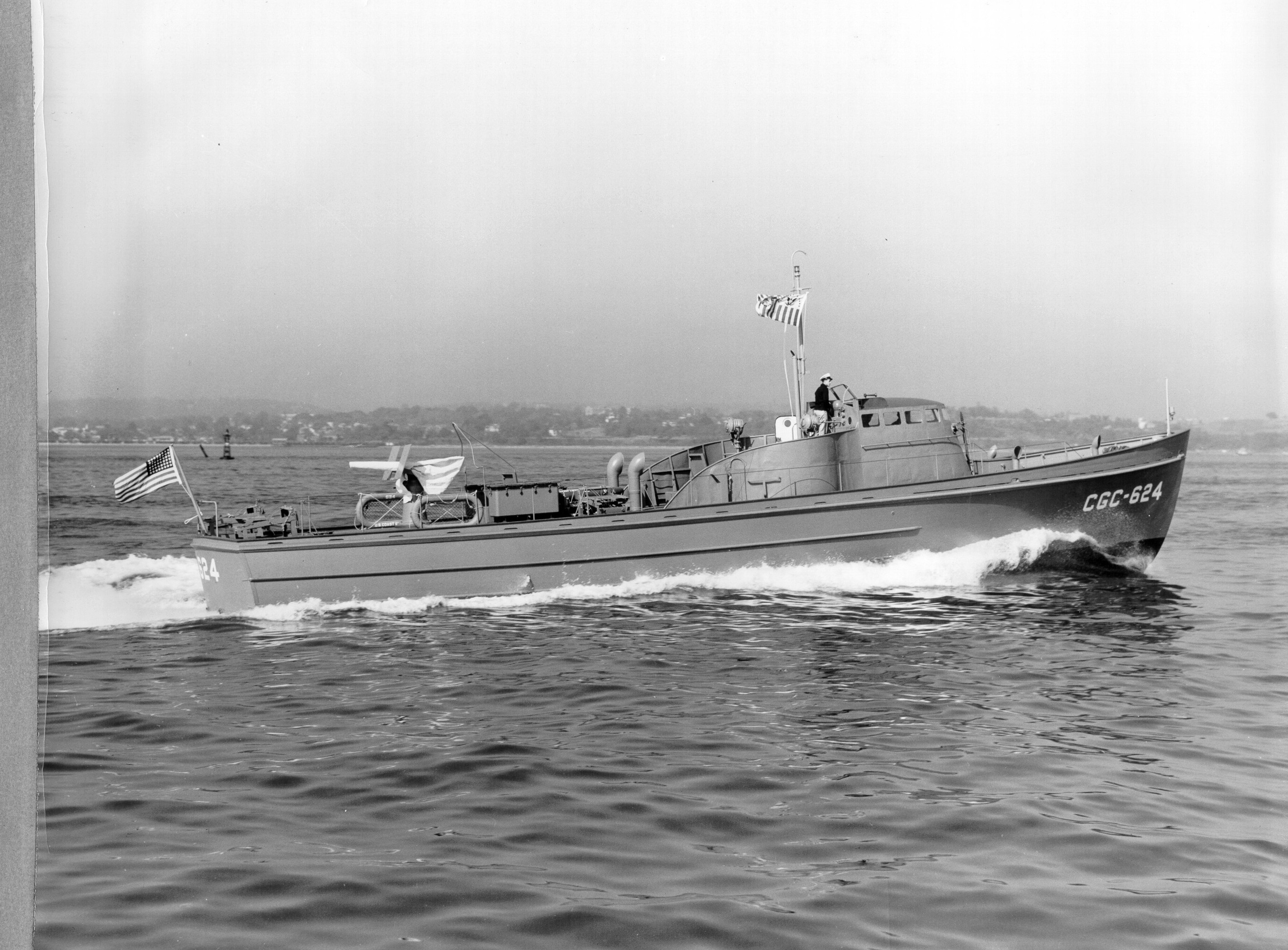
No caption. Photo released October 29, 1942. Photo No. 105197F. Photo by Morris Rosenfield, New York (USCG photo).
[190424-G-G0000-1001]
A newly launched 83-footer, the GC-624 (later 83373 & CG-14 in Rescue Flotilla 1). These wooden-hulled cutters were all built by Wheeler Shipyard in Brooklyn, New York. The first 145 cutters were fitted with an Everdur bronze wheelhouse but due to a growing scarcity of that metal during the war, the latter units were fitted with a plywood wheelhouse. A total of 230 83-footers were built and entered service with the Coast Guard during the war. Twelve other 83-footers were built for the Navy and were transferred to Latin American navies.
Note the 20mm/80 on her quarterdeck and the depth charge tracks off her stern.
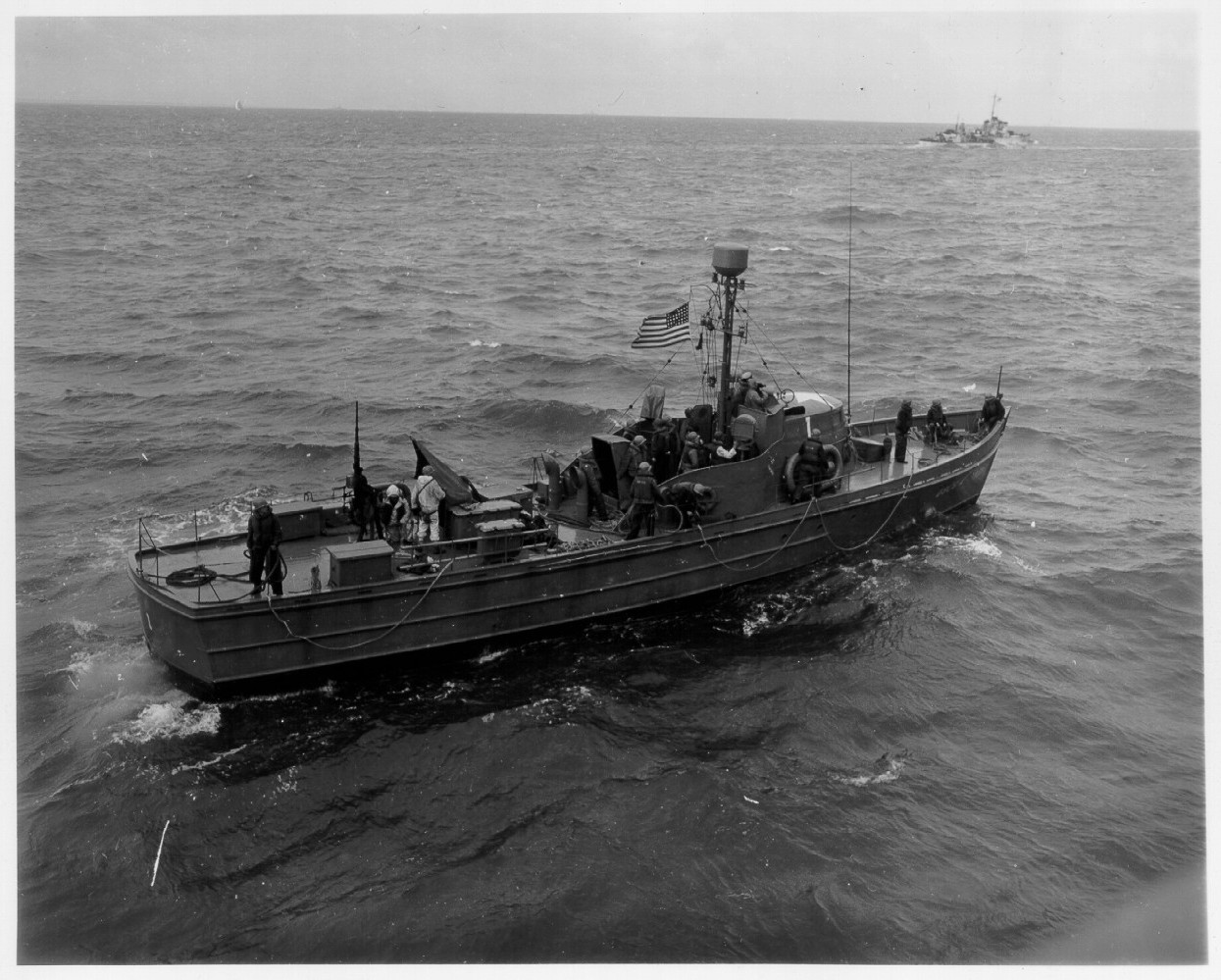
No caption. No date listed; probably June 6, 1944. Photo No. 205. Photo taken by "Sargent."
[190424-G-G0000-1002]
The USCG-1, formerly the 83300, escorted the first waves of landing craft into the Omaha assault area on D-Day morning. Her crew pulled 28 survivors from a sunken landing craft out of the English Channel right off the beaches before 0700, 6 June 1944.
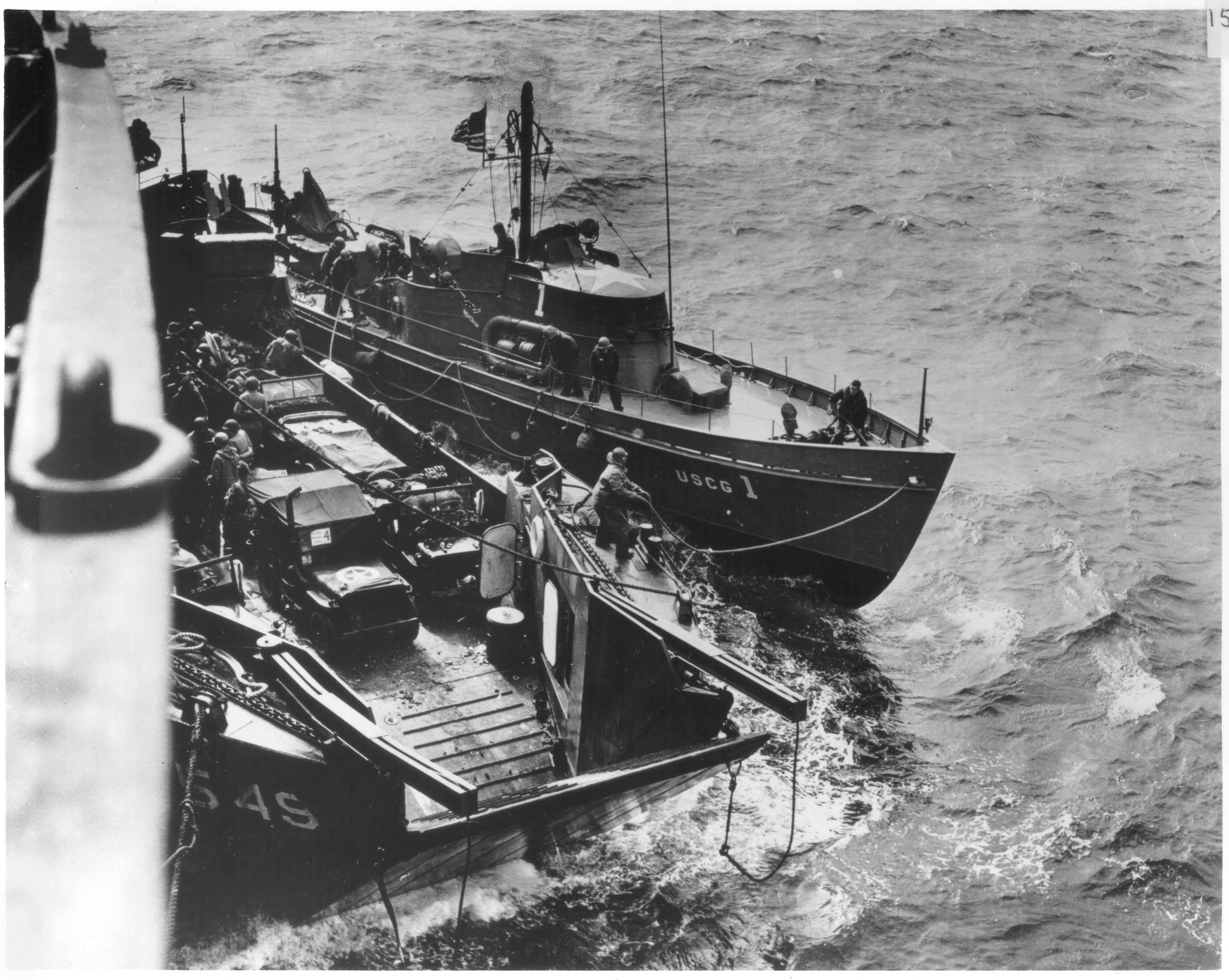
No caption. No date listed; probably June 6, 1944. No photo number listed. Photographer unknown.
[190424-G-G0000-7001]
The 83-foot Coast Guard cutter USCG 1 off Omaha Beach on the morning of D-Day, tied up to an LCT and the Samuel Chase.
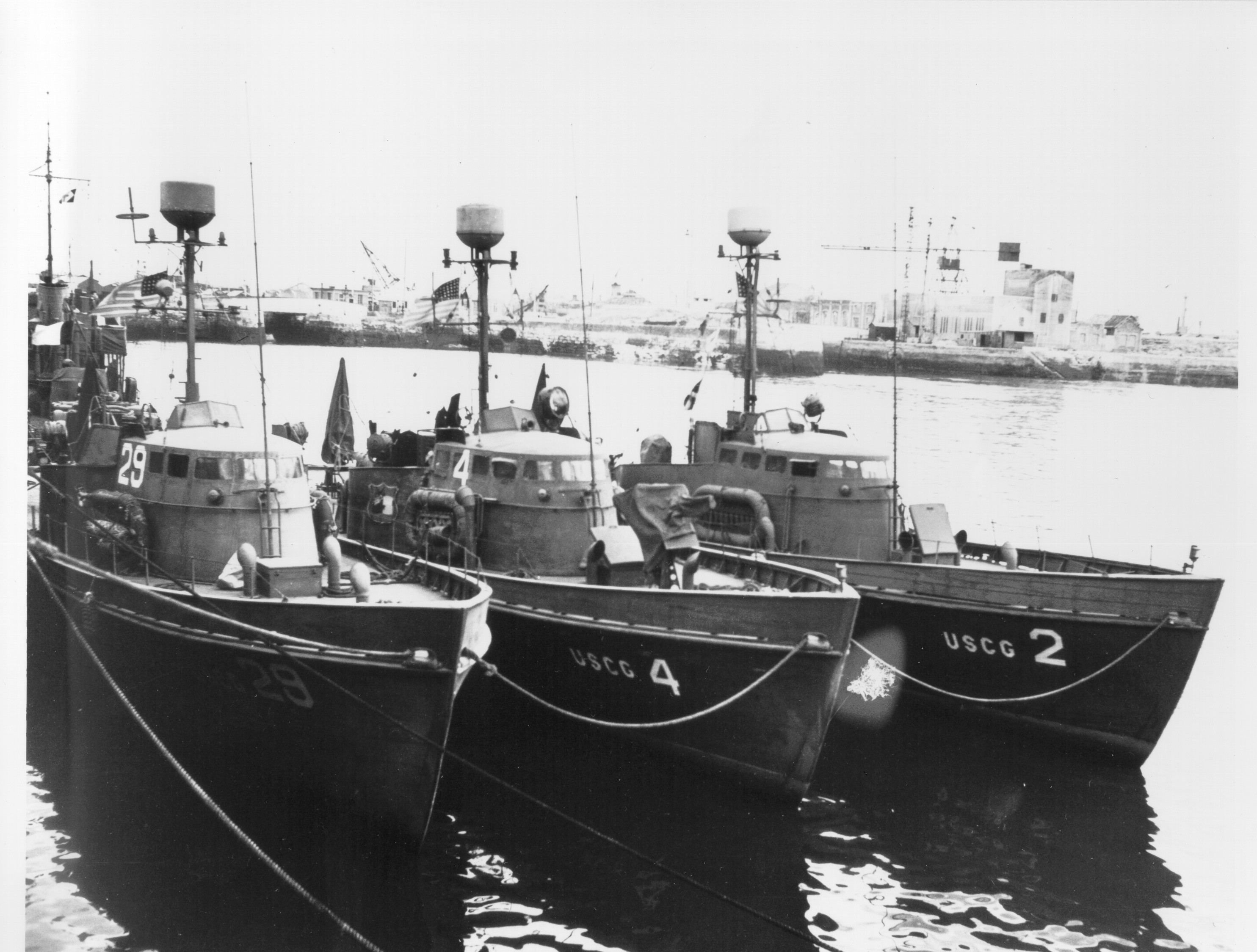
No caption. No date listed; probably June 1944. No photo number listed. Photographer unknown.
[190424-G-G0000-7002]
Left to right: the USCG-29 (83417), USCG-4 (83321), & USCG 2 (83304) tied up at Poole, England.
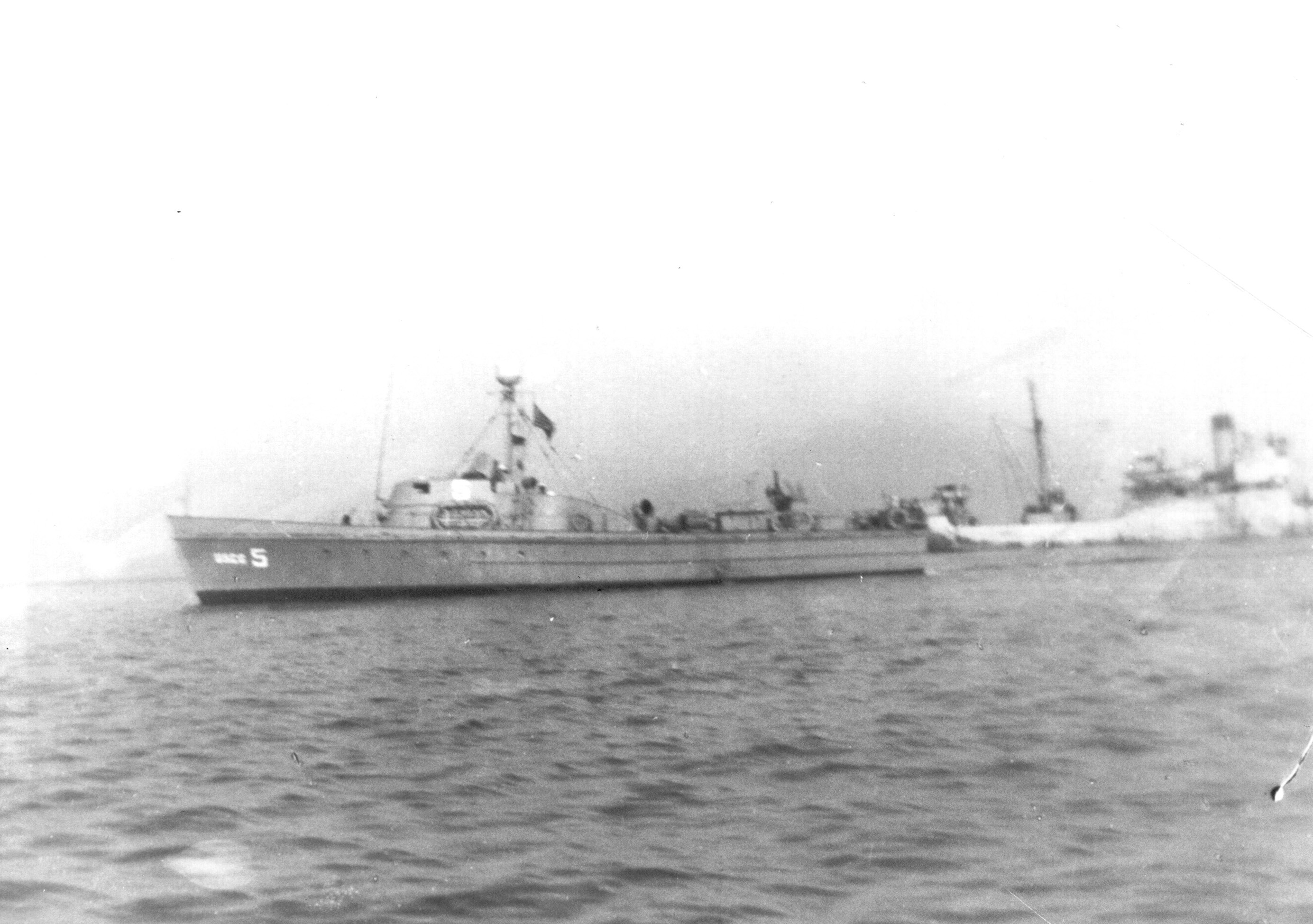
Caption: "PRE-INVASION". No date listed; probably June 6, 1944. Photo No. 568 (SS-312). Photo by Shelby B. Smith.
[190424-G-G0000-1003]
The USCG-5 (83327) in the English Channel.
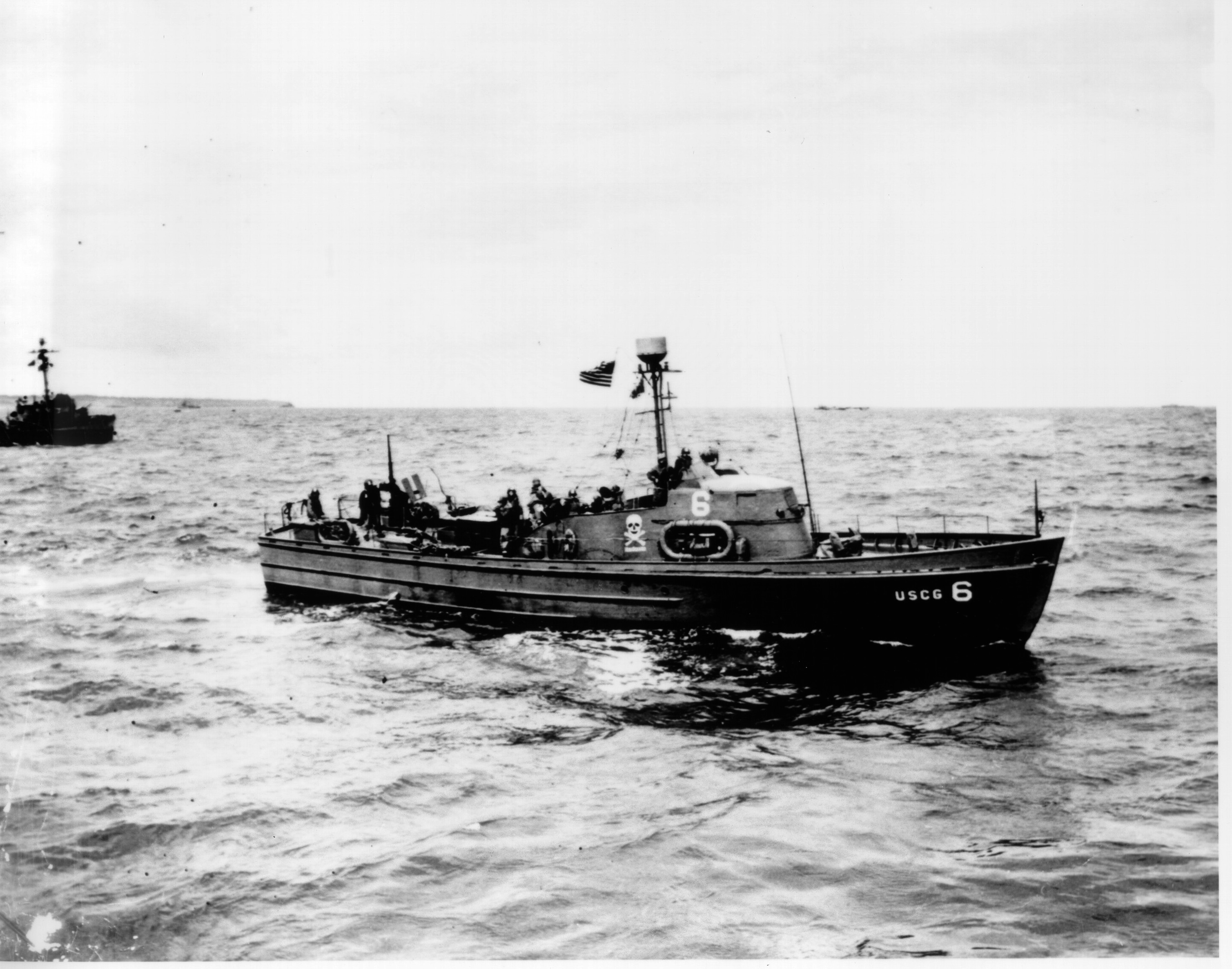
No caption. No date listed; probably June 1944. Photo No. 4078. Photographer unknown.
[190424-G-G0000-1004]
The USCG-6 (83334) off Normandy. Note her unofficial skull and cross-bone insignia hand-painted beneath her flying bridge.
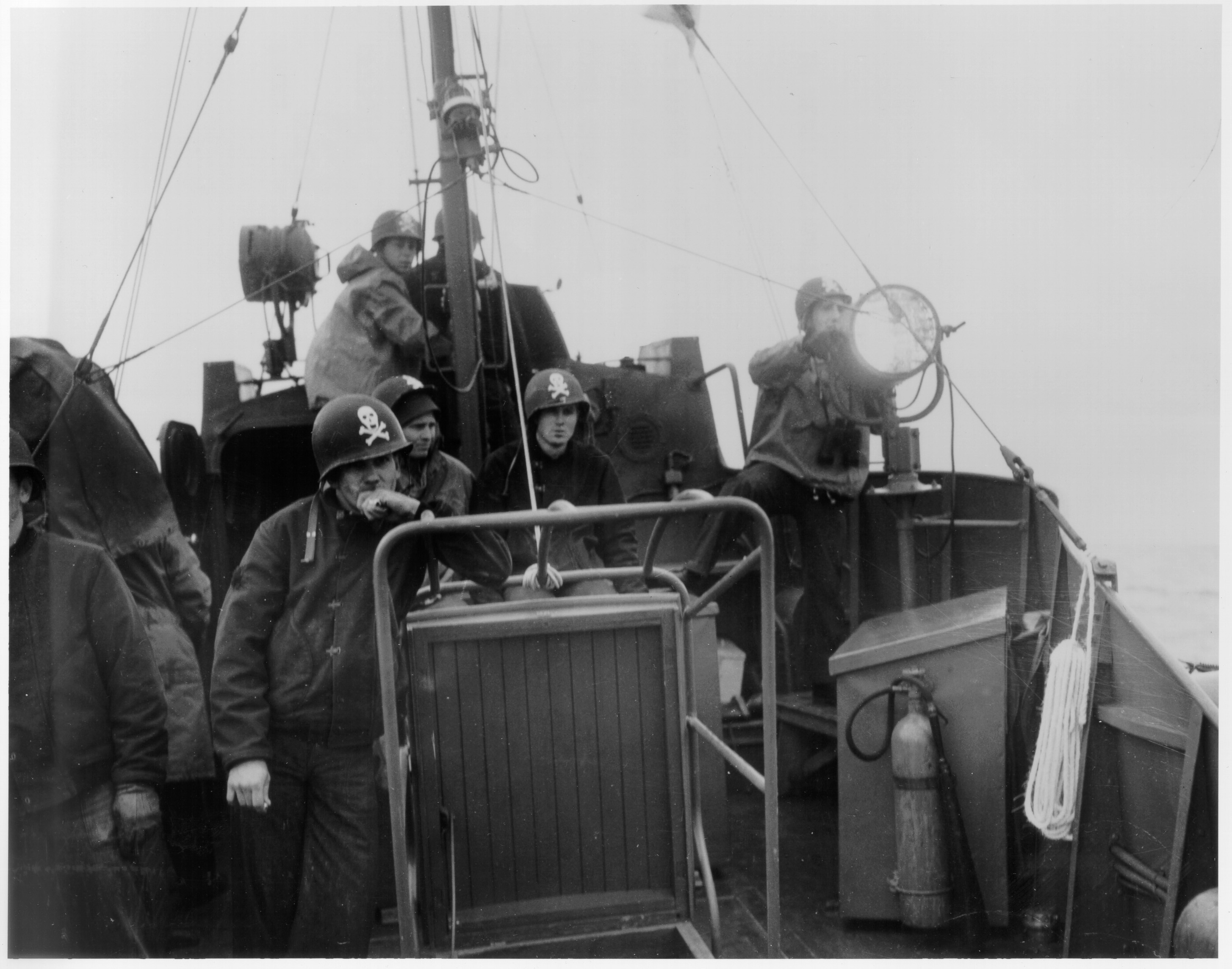
No caption. No date listed; probably June 1944. Photo No. 2388. Photographer unknown.
[190424-G-G0000-3001]
The crew aboard the USCG-6 with the cutter's unofficial insignia painted on their helmets.
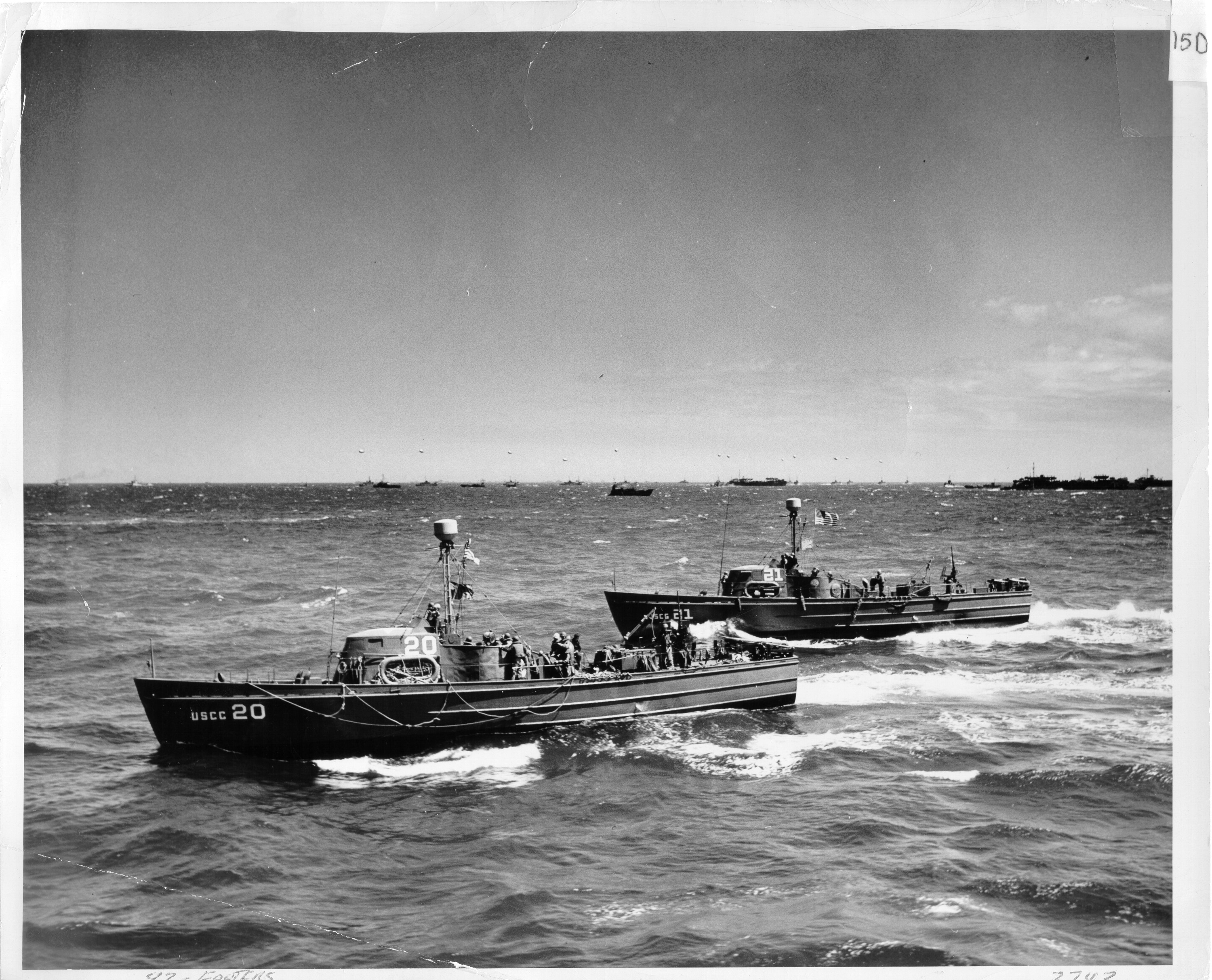
Caption: "COAST GUARD 83-FOOTERS SPEED TO RESCUE: TWO CUTTERS OF THE NOW FAMOUS COAST GUARD INVASION RESCUE FLOTILLA, WHICH AS SAVED THE LIVES OF HUNDREDS OF MEN IN THE ICY CHANNEL WATERS OFF FRANCE, SPEED TOWARD ANOTHER RESCUE. THE LITTLE CUTTERS MAINTAIN AN UNCEASING PATROL OFF THE INVASION COAST." No date listed, probably June 6, 1944. Photo No. 3743 (06-17-44 (02)). Photographer unknown.
[190424-G-G0000-7003]
USCG-20 (83401) and USCG-21 (83402) off the coast of Normandy.
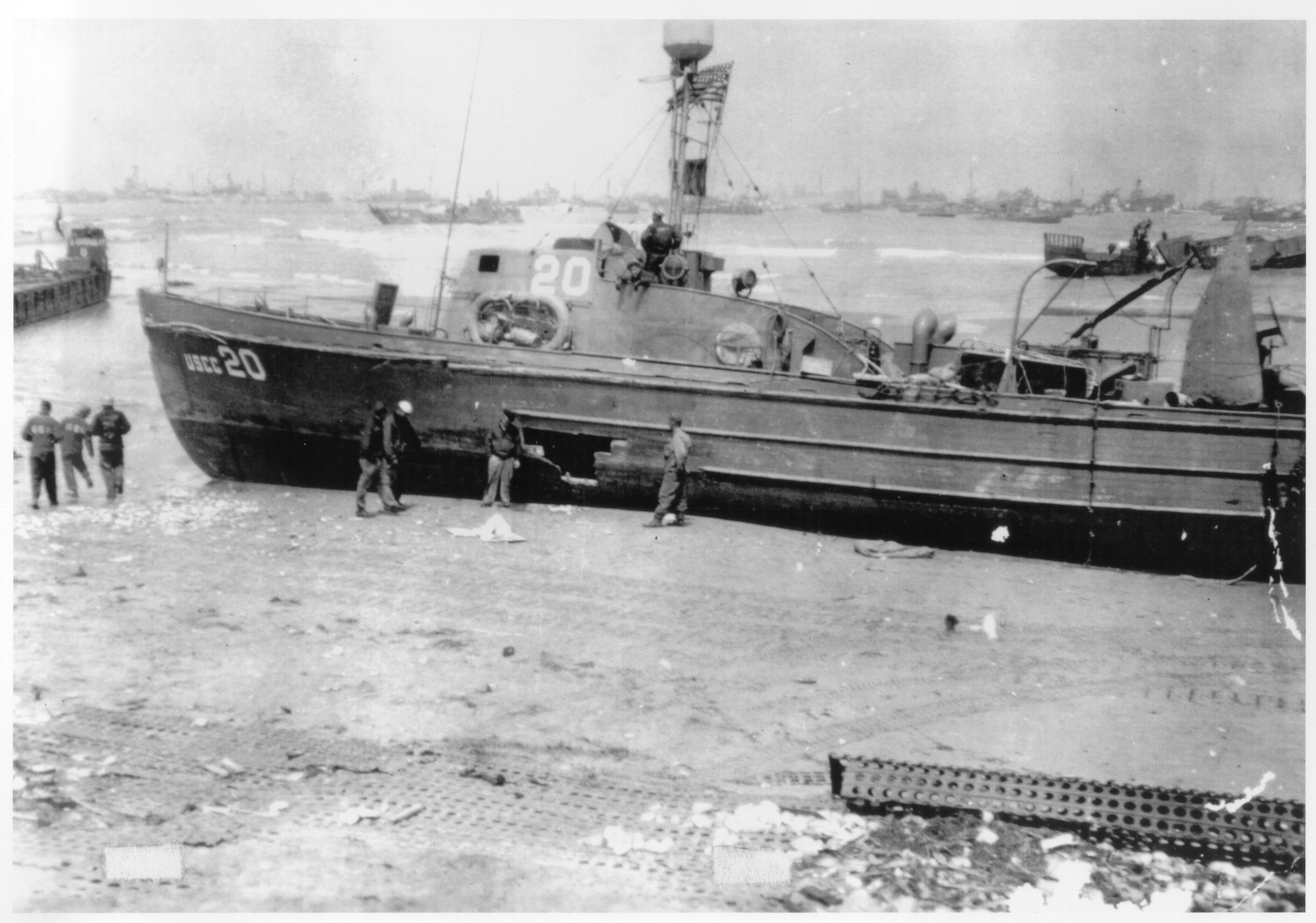
No caption. No date listed; probably June 1944. No photo number. Photographer unknown.
[190424-G-G0000-7004]
The USCG-20 was driven ashore during the storm that destroyed the artificial harbors in June, 1944. She was repaired and transferred to the Royal Navy (through the WSA) later that year.
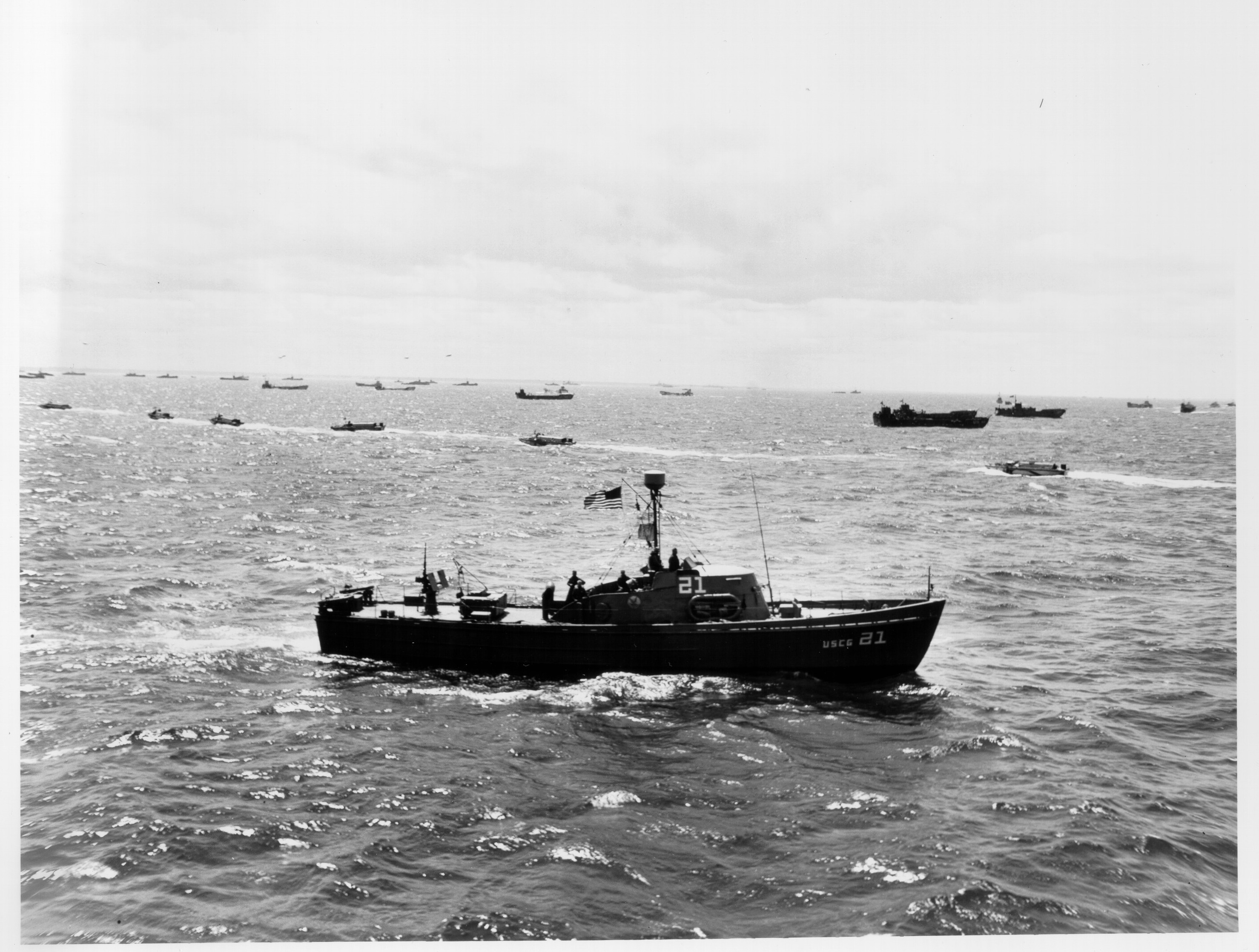
No caption. No date listed; probably June 1944. No photo number. Photographer unknown.
[190424-G-G0000-1005]
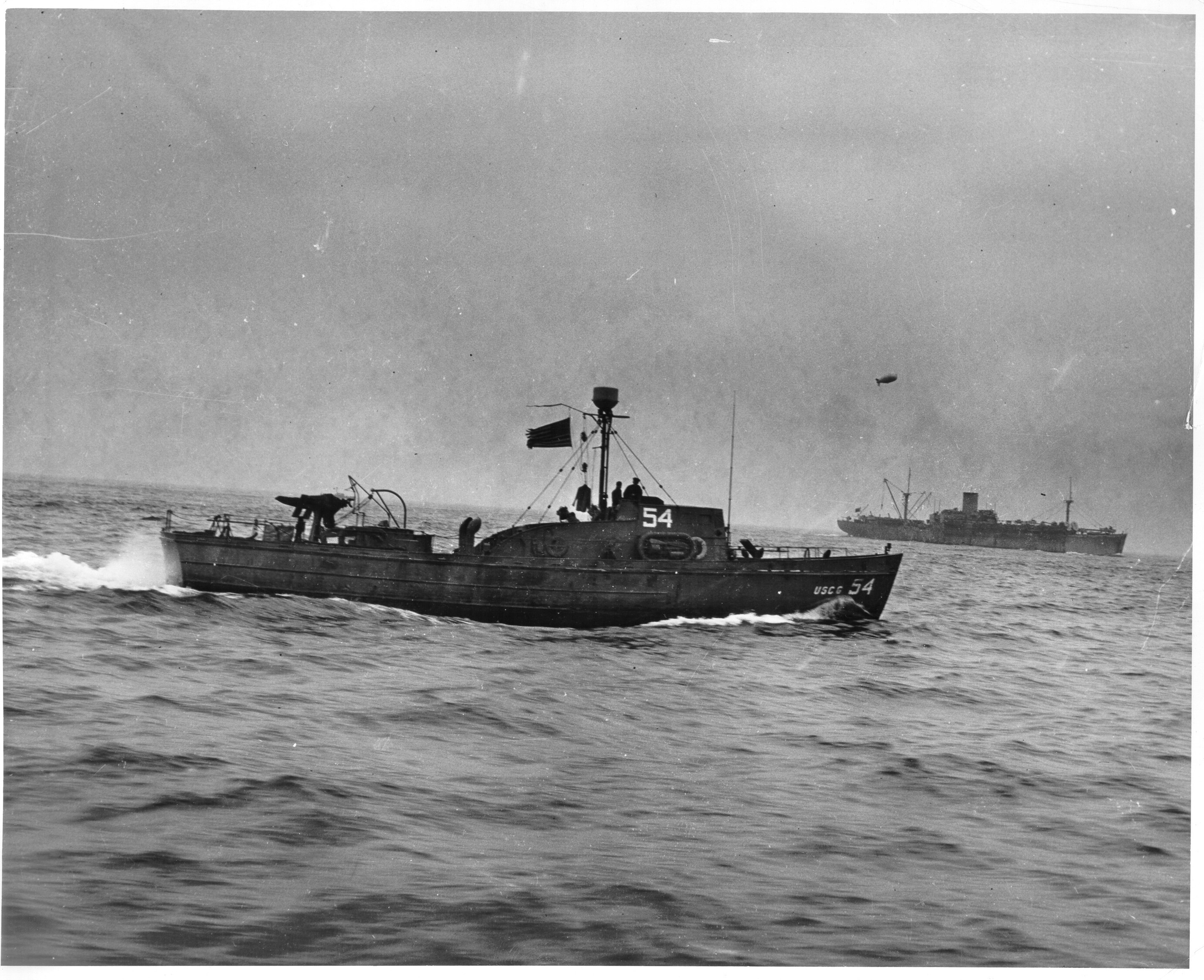
Caption: "COAST GUARD MATCH BOX FLEET: THE DOUGHTY FLEET OF COAST GUARD 83-FOOTERS PLY THE ROUGH WATERS OF THE ENGLISH CHANNEL OFF THE COAST OF FRANCE. THIS COAST GUARD RESCUE FLOTILLA PERFORMED VALIANT SERVICE, SAVING ALMOST 1500 MEN FROM THE WATERS ON D-DAY AND SUCCEEDING DAYS." No date listed. Photo No. 4077. Photographer unknown.
[190424-G-G0000-7005]
USCG-54 (83502)
The next series of photographs were donated to the Coast Guard by Mr. Terry Hannigan. They were taken by his father, John F. Hannigan, who served aboard CG-16 (83337) during Operation Overlord. We appreciate his generosity in providing copies of his father's photos to the Coast Guard archives.
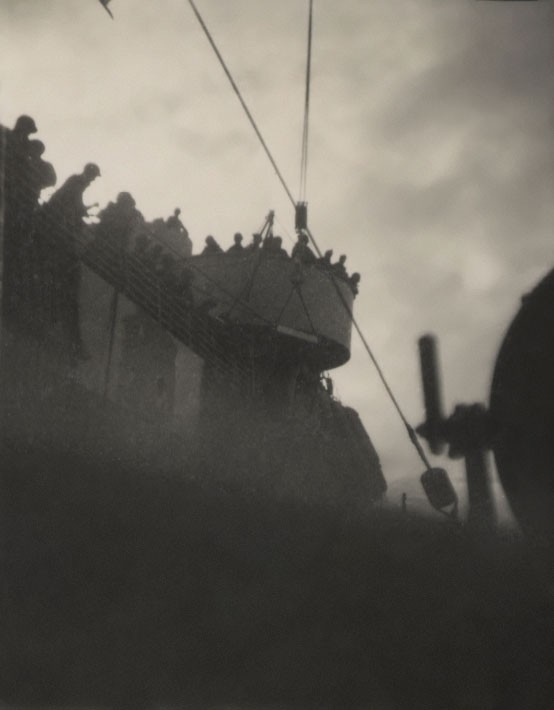
"Maybe the transport USS Bayfield from the deck of the CG-16." After retrieving survivors from the waters off the Normandy beach head, if they were wounded, the 83-footers delivered them for treatment to the larger transports offshore.
Photo courtesy of Terry Hannigan.
NOT AN OFFICIAL USCG PHOTOGRAPH.
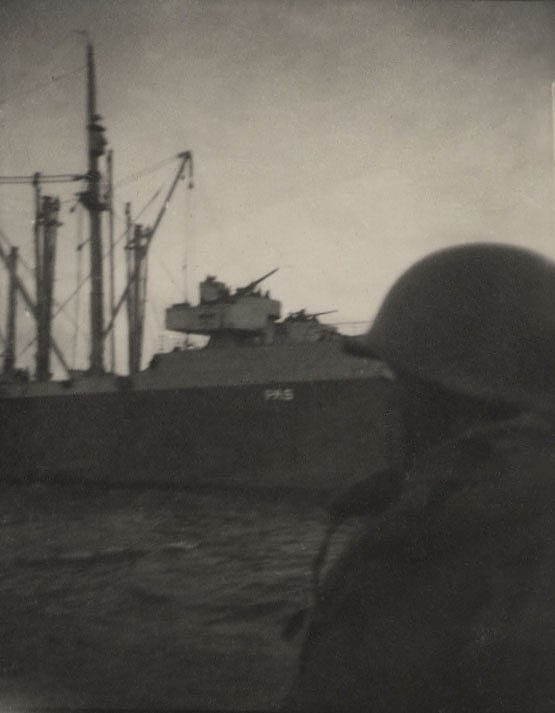
"Maybe the transport USS Joseph Dickman as seen from the deck of the CG-16."
Photo courtesy of Terry Hannigan.
NOT AN OFFICIAL USCG PHOTOGRAPH.
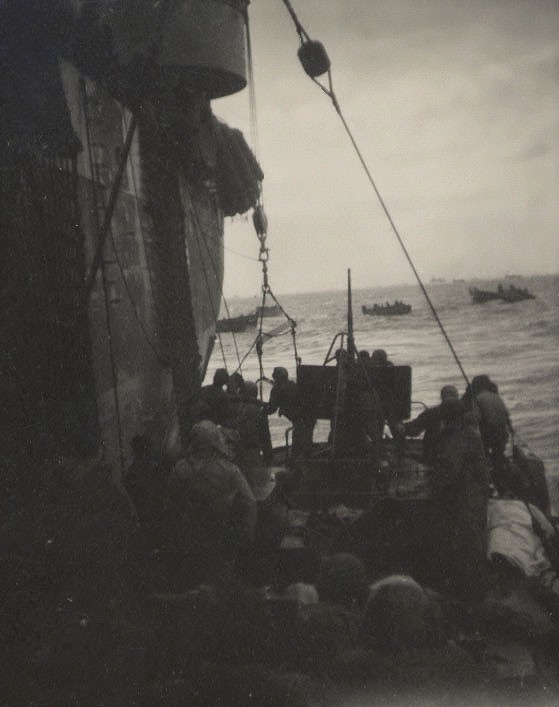
"CG-16 unloading survivors onto the transport."
Photo courtesy of Terry Hannigan.
NOT AN OFFICIAL USCG PHOTOGRAPH.
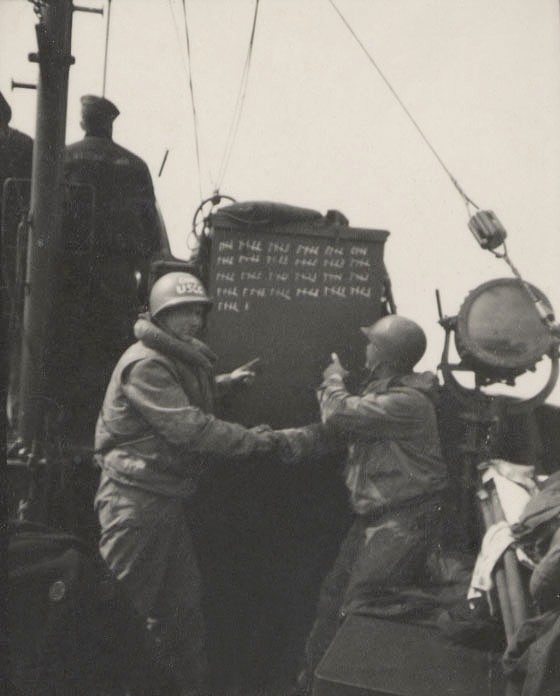
"Crew of CG-16 pointing to the tally board of 126 rescued soldiers."
Photo courtesy of Terry Hannigan.
NOT AN OFFICIAL USCG PHOTOGRAPH.

"Gear covering the back of the cutter."
Photo courtesy of Terry Hannigan.
NOT AN OFFICIAL USCG PHOTOGRAPH.
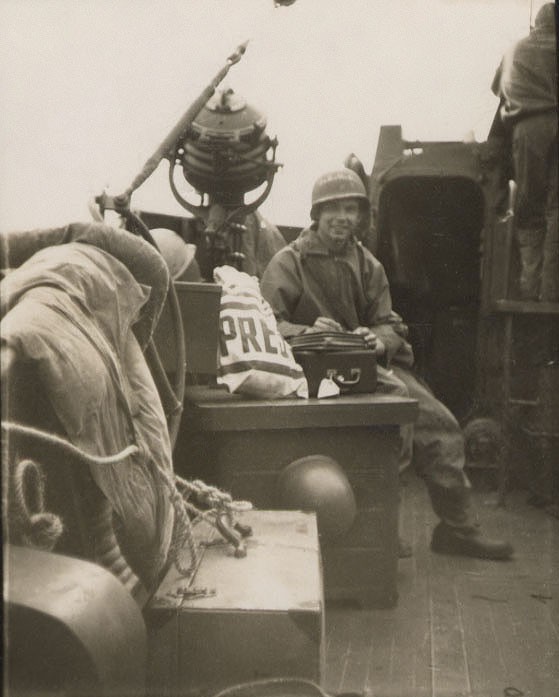
"War correspondent Carter Barber (?) on board CGC-16."
Photo courtesy of Terry Hannigan.
NOT AN OFFICIAL USCG PHOTOGRAPH.
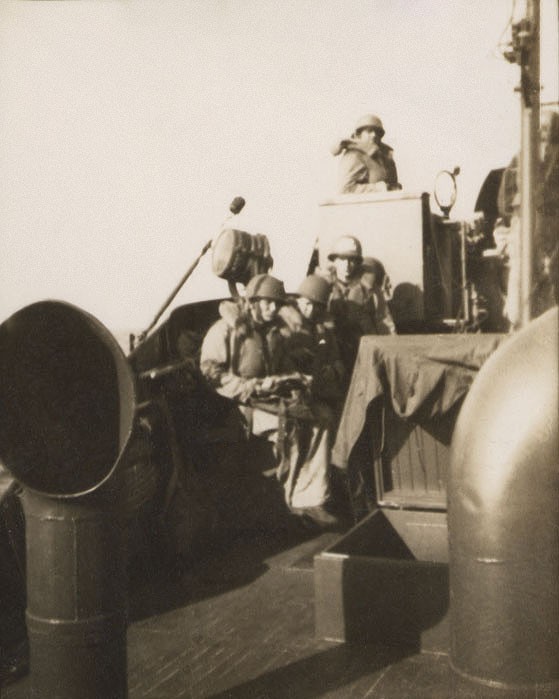
Photo courtesy of Terry Hannigan.
NOT AN OFFICIAL USCG PHOTOGRAPH.
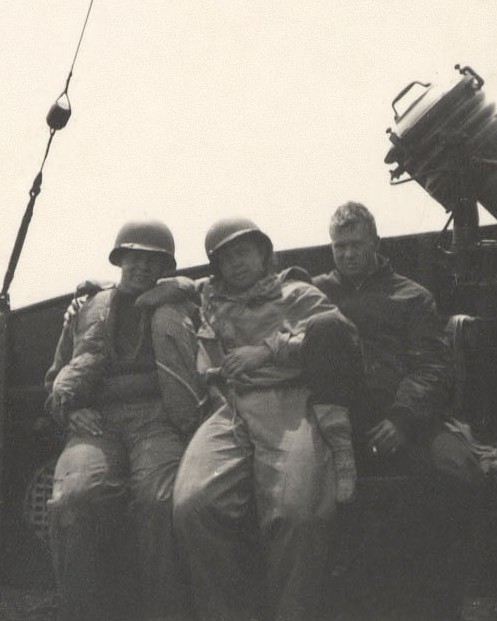
Photo courtesy of Terry Hannigan.
NOT AN OFFICIAL USCG PHOTOGRAPH.
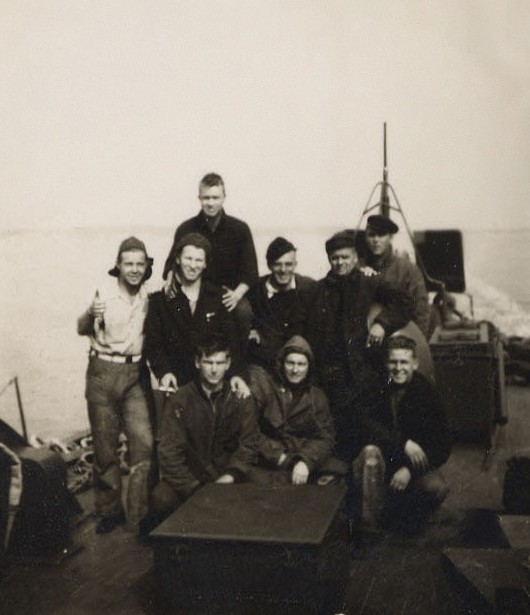
"Crew of CGC-16."
Photo courtesy of Terry Hannigan.
NOT AN OFFICIAL USCG PHOTOGRAPH.
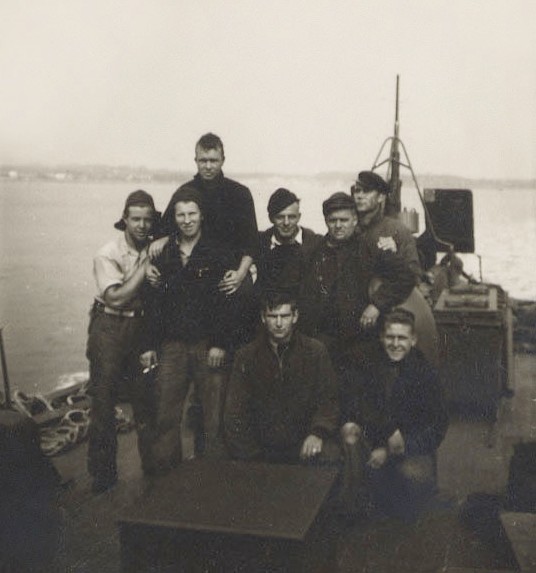
"Crew of CGC-16."
Photo courtesy of Terry Hannigan.
NOT AN OFFICIAL USCG PHOTOGRAPH.
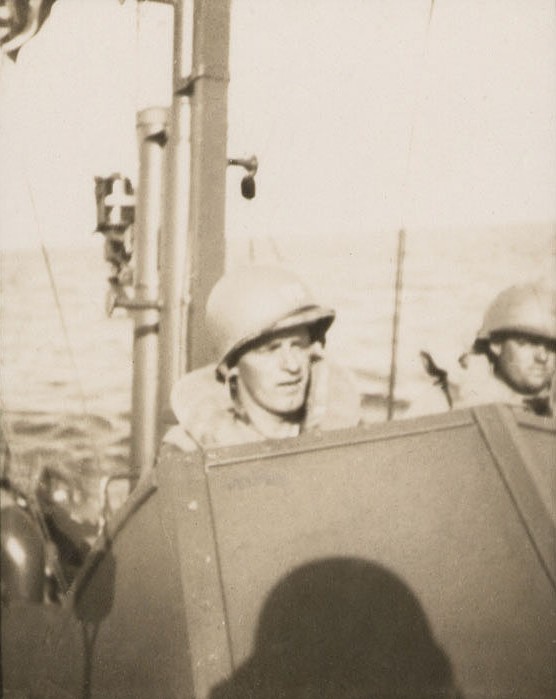
"W Cheever (?)."
Photo courtesy of Terry Hannigan.
NOT AN OFFICIAL USCG PHOTOGRAPH